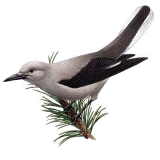Papers in the Biological Sciences
Document Type
Article
Date of this Version
1998
Abstract
This volume, Animal Cognition in Nature, is the result of an ongoing synthesis of several ideas that were considered revolutionary, if not heretical, in the 1960s. At that time, animal behavior, whether studied in field or laboratory, by ethologists or psychologists, was generally interpreted as the result of simple processes relating specific stimuli to specific behaviors. Examples from that time include S–R models, sign stimuli, IRMs, etc. Theoretical constructs such as mental representations, memory or attention were avoided. Today, students of animal behavior work in an entirely different atmosphere. This is the result of several developments.
One of these developments was the aptly named “cognitive revolution” among psychologists which inspired researchers to adapt the cognitive stance and test a wider range of behaviors, revealing many previously unexpected abilities in their subjects. Simultaneously, behavioral ecology appeared, with a whole set of novel concepts such as optimization models, sociobiology and kin selection. In addition, results from fields as diverse as social communication, navigation and neurobiology suggested that animals remember, process and store large amounts of complex information that allows them to predict outcomes in a variety of situations and thus solve a striking range of problems. For example, two of the editors of this volume have worked on spatial memory in seed-caching birds. In order for long-term spatial memory to occur, an animal must first transform spatial information into some type of neurological code (or representation). This must then be stored, remaining intact in memory for some length of time. Later, this information must be retrieved from long-term memory, decoded and translated into appropriate behavior. This is an example of how cognitive systems involve complexes of neurological and behavioral characteristics. We have long since left the realm where animals are viewed as simple, stimulus-bound responders, passive learners or robotic followers of conditioning regimes



Comments
Published in Animal Cognition in Nature: The Convergence of Psychology and Biology in Laboratory and Field, edited by Russell P. Balda, Irene M. Pepperberg, and Alan C. Kamil, San Diego (Academic Press, 1998), pp. vii–xi . Copyright © 1998 by Academic Press. Used by permission.